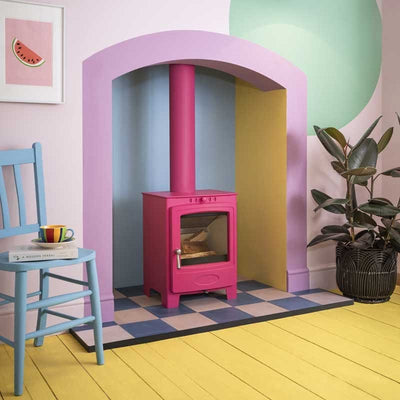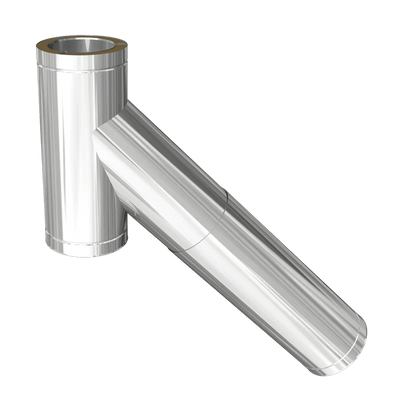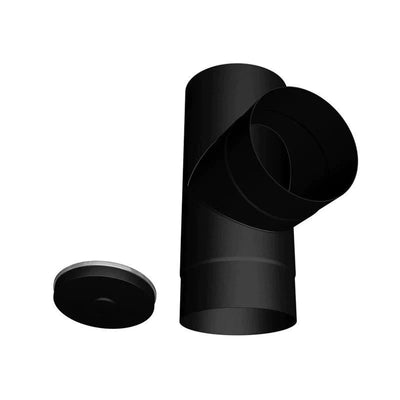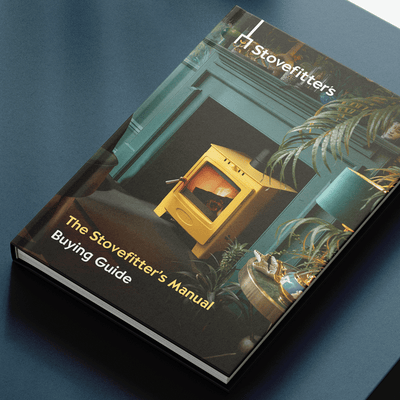How to choose a wood burning stove for your property (includes infographic)
5 mins
How to choose a wood burning stove for your property (includes infographic)

Choosing your stove
Are wood burning stoves a good choice?
Unlike coal, gas or oil, wood is a renewable resource. A tree, over the course of its lifetime, absorbs as much carbon (or carbon dioxide) as it releases when burnt.
Modern wood burning stoves are generally 80%+ efficient (less than 20% lost heat up the chimney), compared to open fires which are 15-20% efficient (80-85% lost heat up the chimney)
Do I have to have an existing chimney?
No! If you do not have a chimney or it is in the wrong place then you can install a clip-together chimney system (known as "twin wall" and not to be confused with two-layer or double-skin chimney liner). This can go up through the property or out the wall and up the outside of the property.
Wood burning or multifuel?
"Wood only" means the stove only burns wood.
"Multifuel" means the stove can burn wood and coal/smokeless fuel.
The difference is the addition of a raised grate and ash-pan (if coal or smokeless fuel is to be burnt then air from below is required and hence the grate). Many wood-only stoves can be converted to multi fuel with a multifuel kit that can be retro-fitted. "Wood-only" is the trend due to wood being a renewable resource.
What style stove to choose?
There's a stove to suit every home: a traditional style, a contemporary design, or something that straddles both camps.
Do I need an approved stove?
If you live in a smoke control area you will need to choose a stove approved by Defra to burn wood in the area (legal requirement). All of the stoves we sell are Defra approved.
If situated in a fireplace recess will the stove fit?
There should be no combustible materials in or around your recess and even in a non-combustible recess the wood stove ideally requires a minimum air gap to the sides, rear and top. This air gap is to allow heat to leave the recess and enter the room (not just heat up the recess walls!).
Minimum air gap to non-combustibles is usually 100mm but check the stove manufacturer's instructions as some plastic brands have stricter recommendations.
What heat output should I choose?
Establishing the heat required for the room is something to consider early on. Stoves have a kW rating. Too small, and the stove will be inadequate for purpose.
Stoves work best when fuel is burning well (not smouldering). With too large a a fuel load, you could find yourself constantly cutting the air supply and dampening the fire right down (this causes incomplete combustion which is bad for the chimney and the environment).
For every 14m3 of space, approximately 1kw is required to achieve a comfortable temperature. So to estimate the heat output required, divide the room in cubic metres (length x width x height) by 14. That is for a medium insulated property. For a poorly insulated property divide by 10 and for a well-insulated new build divide by 25. This calculation provides only a rough estimate however, as factors such as the level of insulation, wall construction, the number of window or door openings, and features such as open stairwells have a bearing.
Do not rely on the kw figure proposed by manufacturers (often called the nominal figure). The nominal figure is not necessarily the maximum figure. As an example, model A and model B both have the same 5kW nominal rating yet one can easily fit in 50% more wood than the other; the more wood being consumed by fire then the more the kW output. One needs to know the size of the firebox size if one requires the maximum heat output. The nominal kW figure does though inform you that the stove has been tested and will achieve this figure under test conditions.
Do I require an air vent for the stove?
With newer properties or stoves over 5kw you may require an air vent in the room to allow air into the room to replace the air leaving by the chimney.
Some stoves have a "rear air connection" that allows this air to be drawn directly from outside. An external air connection is especially useful in properties designed to be airtight and can provide a solution when striving to rectify a problem with a malfunctioning chimney (if caused by in-house pressure differences).
Can I self install a wood stove?
Installation can be a job for a qualified installer that is legally registered. It is though quite possible to self install and get your local building control to sign off the installation. Self-installation requires a certain amount of research.
Rules in Scotland are less strict than the rest of the UK.
How much should I spend on a wood burning stove?
When it comes to wood stoves, a more expensive stove can excel over a cheaper stove in several ways, including:
Aesthetics (more time spent on design)
Hinges (sometimes hidden on more expensive stoves)
Better quality glass
Thicker steel (longer life)
Improved door operating mechanisms
Longer warranty
Better flame control due to more resource invested on design of air flow within stove
Brushed-steel fittings instead of less expensive chrome
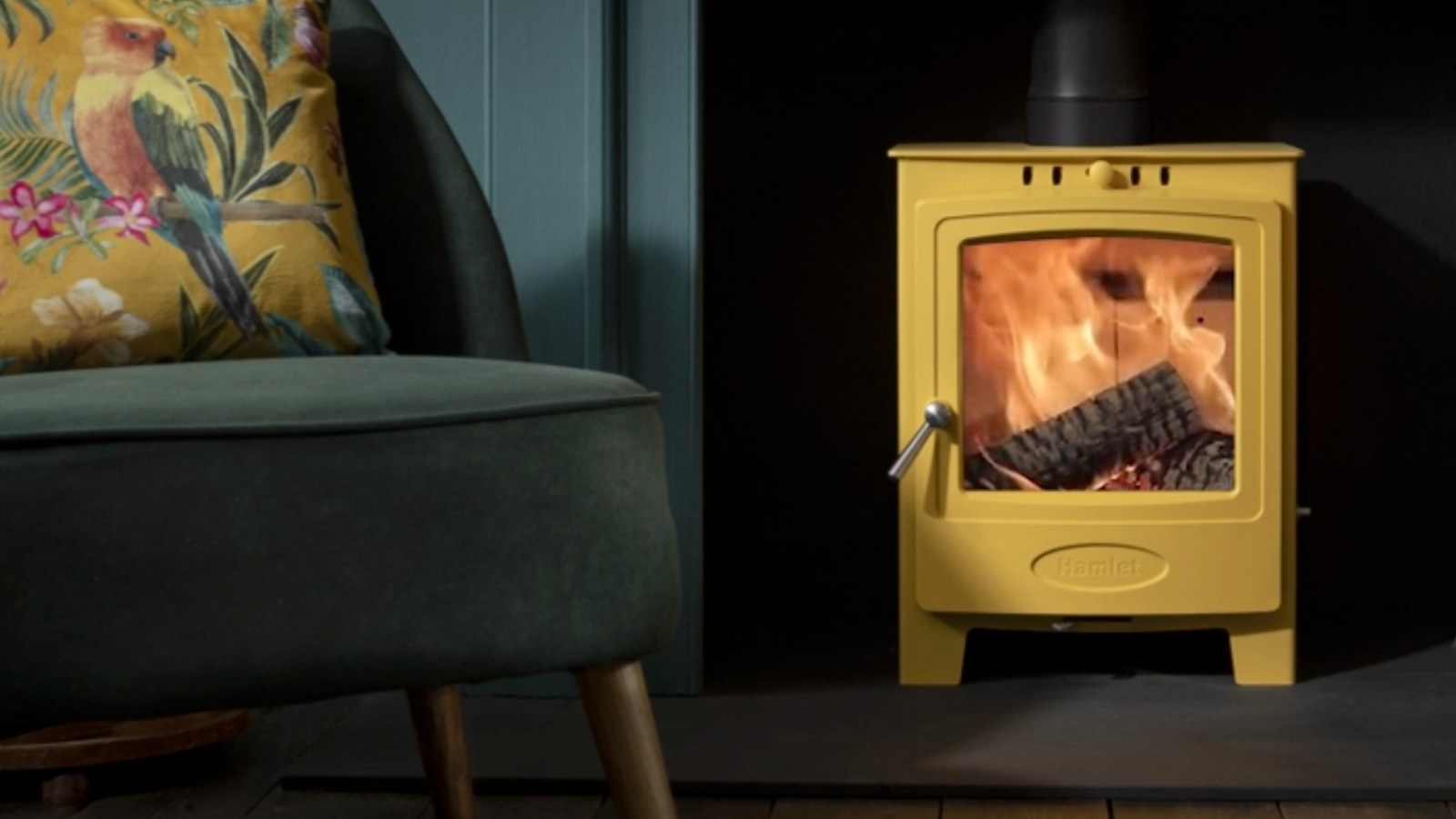

How to choose chimney liner & how much to buy


Installing a stove in a fireplace - what do I need?
FAQs
See all FAQsCosts correct as of April 2023:
Approx. costs if you have a chimney and fireplace ready to use: £750-£1,000 (save £500 by self-installing).
Approx. costs if you have a chimney but need the fireplace "opening up": £1,600-£2,200 (save £1200 by self-installing).
Approx. costs if you do not have a chimney and need a clip-together flue: Shed £475-£700. Bungalow £1500. 2-storey house £2500. Save £1,000-£1400 by self-installing.
Above figures include labour and materials but no appliance.
We, of course, advise you to purchase your stove and materials from Stovefitter's to ensure quality goods are installed (some installers use budget materials to increase margin). If you buy your stove from us (rather than your local small shop or installer) we have a lot more power when approaching manufacturer's with a warranty issue. Why is that? Because we buy many hundreds of stoves a year from these brands.
We do not fit stoves.
But we know a few who do!
Google: Hetas installers
Hetas are the trade body of registered UK installers.
Most installations will require that you slide a chimney liner down your chimney (flexible metal tube 5" or 6" in diameter). Do you have a narrow chimney and want to lessen the risk that a liner might not go down your chimney? Then make sure your chosen stove can use a 5" liner.
Must I line my chimney? Best read this article but most likely the answer is yes. Do I have to fit a chimney liner?
DEFRA-Exempt wood burning stoves with a 5″ collar can usually be fitted to a five inch liner rather than the usual 6″ minimum, making the installer's job much less stressful.
ALL OF THE 5KW STOVES WE SELL CAN BE FITTED TO A 5" CHIMNEY LINER.
I seriously suggest any self installer fits a 5" liner unless they know their chimney is large enough for a 6"!
What is the best chimney liner? Silvacore 904 (we sell it so of course we will say that ;-). What is the best chimney liner?
Useful links
Will your stove require an air vent within the room (some stone walls are very difficult to drill)?
5kW or under and wood burning stoves often do not require an air vent (new builds always require an air vent).
Useful links
What is the maximum output in kW of your "5kW" wood burning stove? The majority of manufacturers just specify the “nominal output” and this figure means very little in real life. The nominal is a figure the manufacturer chooses to sell the stove at - the stove is capable of reaching at least this output with one fuel load. Nominal means "capable of". But it is not the maximum.
Check out the size of the area where the logs will go (firebox size) as this varies enormously. The kW output is completely dependant on the amount of logs burning at any one time - more logs burning equals more heat. If you can fit three logs in stove A and just two logs in stove B then stove A will be capable of throwing out 33% more heat.
DO NOT TRUST MANUFACTURERS’ kW RATINGS as manufacturers specify what output they desire to sell the stove at and testing allows for much “playing with the figures”. This is why you can get very small 5kW stoves (e.g. Aga Little Wenlock) and very large 5kW stoves (e.g. DG Ivar 5 by Dik Geurts which is actually rated 5kW but has a MUCH larger firebox than the Ekol Crystal 5 by Ekol Stoves). A Crystal 5k might get to 5kW and not be capable of any higher whilst a DG Ivar, despite being rated at 5kW, can get to 8kW with a full fuel load.
Note that, over time, one might damage the internal firebricks of a stove by running at a higher load than the manufacturer's suggest. Firebricks are easily replaceable.
Useful links
Will your wood burning stove fit in your recess WITH the required air gaps around it? This is obviously not an issue if your stove will be freestanding.
Air gaps to non-combustible materials (brick, stone etc.) are usually "as close as you like" legally but manufacturers will sometimes specify a recommendation. This recommendation is there to allow heat to escape from the recess into the room - so you get the heat benefit rather than the heat soaking into the building structure and being lost. If no gap to non-combustibles recommended then we suggest 50-100mm air gap left and right of stove, 50mm behind and 100mm above.
Are you in a Smoke Control Area (usually built up areas)?
Choose your stove accordingly.
A stove must be DEFRA-Approved if you wish to burn wood in a smoke control area.
ALL OF THE STOVES WE SELL ARE DEFRA APPROVED FOR SMOKE CONTROL AREAS.
In simple terms if a stove has an efficiency rating of 70% then 30% of the heat from your logs goes up the chimney.
If a stove has an efficiency rating of 90% then only 10% goes up the chimney.
So think of this in terms of how many logs you have to chop/buy.
Example: A Saltfire Peanut 5 by Saltfire Stoves in Dorset has an efficiciency of 80%.
A tall chimney (6m or more) that is lined will be happy with an efficient stove.
Efficiency importance can be said to be overrated and anything between 75% and 85% is fine. Go much higher and performance can actually suffer (smoke in room when opening door to reload, blackening of glass).
Many modern stoves can go on 12mm thick hearths. Others require full, 5″ thick constructional hearths. All of the stoves we sell state whether or not a 12mm hearth is suitable.More about hearths for wood stoves here.
Helpful links
Can you can talk to somebody on the phone should you need to after the wood burning stove has been delivered, especially if you are self installing? Will the staff at “wesellzillionsofstoves.com” be able to assist with any installation issues? What if there are any problems after install?
Do yourself a favour before ordering stoves or materials on the Internet: Go to Trustpilot and type in the company name before you buy. Some companies advertising at the top of search engines are not good news - check for yourself.
When striving to find thebest 5kW wood burning stovesyou will likely be bewildered by the choice. There are many to choose from. The question I get asked most in our shop is “why should I pay <£1,000> for this one when this other one is just <£500>?”. Here is the very simple answer:the cheaper wood stoves are made in Chinaor Eastern Europe whilst the more expensive are made in Western Europe (or sometimes the USA). Here are a few examples where a more expensive stove might excel over a cheaper stove:
- Aesthetics (more time spent on design)
- Hinges (sometimes hidden on more expensive stoves)
- Better quality glass
- Thicker steel (longer life)
- Improved door locking mechanisms
- Longer warranty
- Improved controllabilty of flame due to more resource invested on design of air flow within stove
- Brushed steel fittings instead of cheapy chrome look
Open and close the door on a cheap Chinese stove. Then open and close the door on a DG stove, Arada stoves, Woodford stoves, Hamlet stoves or Saltfire stoves. You’ll understand the difference.
Stove pricing reminds me of wine pricing. A £20 bottle of wine is not double the quality of a £10 bottle of wine (the drinking experience might be improved by 20% as an example). We are talking “the law of diminishing returns here. They are all “fire in a metal box” at the end of the day.
Yes. However, there are specific regulations and restrictions in place to address air pollution concerns, particularly in areas designated as Smoke Control Areas. In these areas, only approved "smokeless" fuels or exempt appliances, such as Defra-approved wood-burning stoves, can be used. These stoves are designed to burn wood more efficiently and produce fewer emissions.
All the stoves we sell are DEFRA approved and Eco-design approved and suitable for all areas of the UK.
Terminology
View all TerminologyA stainless steel tube, slides down a brick/stone chimney to provide a smooth and safe route for smoke.
All of our stoves are approved by DEFRA to burn wood in all UK locations including Smoke Control Areas (towns and cities). Not all stoves are, so be careful if buying elsewhere.
All of our stoves are ECODESIGN approved to be sold in the UK. Not all stoves are, so be careful if buying elsewhere. ECODESIGN is mandatory by law since January 2022.
The base your stove sits on.
If the chimney is the polo mint then the flue is the hole.
More buying guides
View All

How to choose a wood burning stove for your property (includes infographic)
Infographics

What size wood stove do I need? Don't let manufacturers fool you!
Buying Guides

Do I need an air vent for a wood burning stove? If I do not bother?
Buying & DIY

Knowledge Tree: Process of buying and installing a wood burning stove
Buying & DIY

Chinese wood burners – should I buy one or are they all crap?
Buying Guides

What else do I need to buy to install a wood burning stove?
DIY Guides

Infographics for wood burning stove purchase and install
Infographics

Wood burning or multifuel stove? A stove fitter decides.
Buying Guides
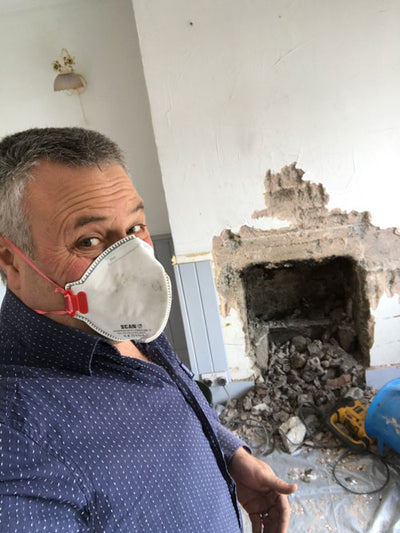
A few words from Julian
Buying & DIY


Find my perfect stove
Answer 3 simple questions and we will show you the best Stoves for your space.




